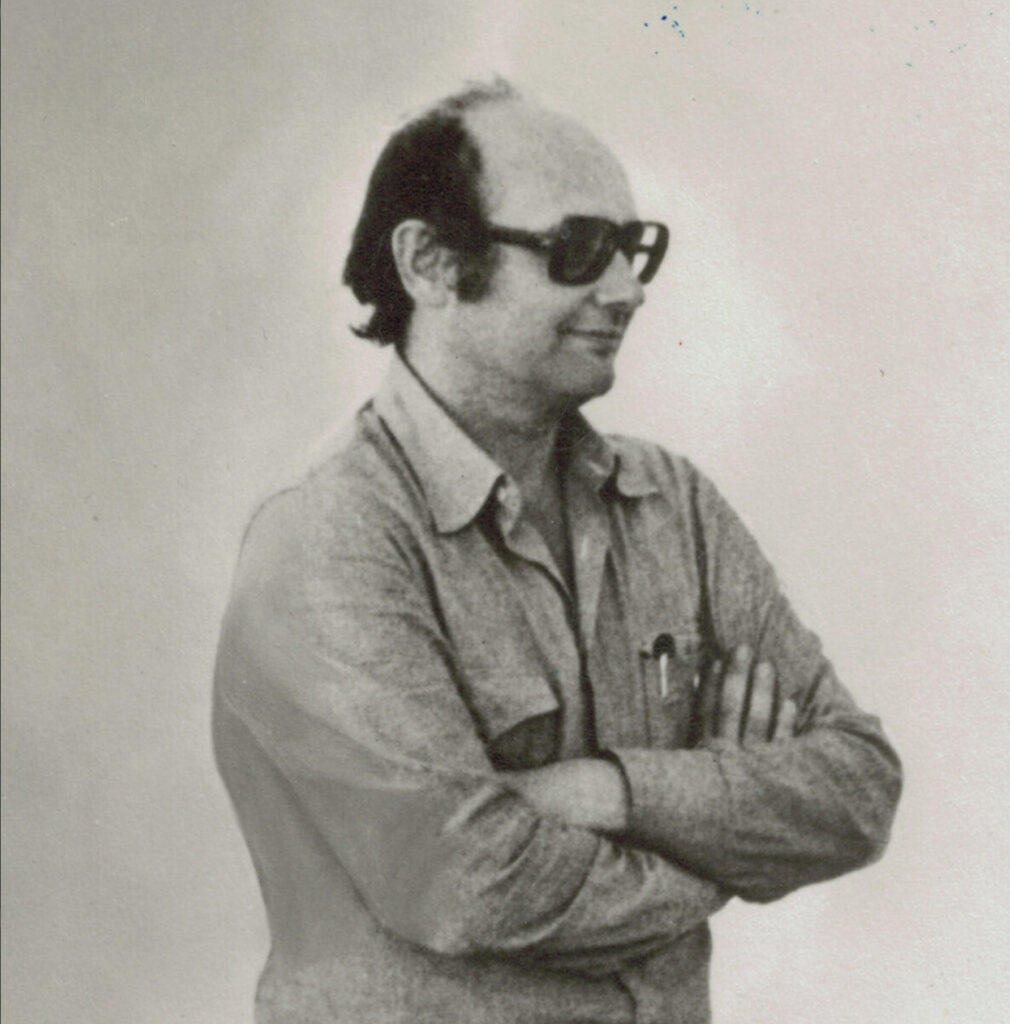
Sol Lewitt
Sol LeWitt was born in Hartford, Connecticut, in 1928 and died in 2007. He completed a BFA at Syracuse University in 1949 and then served in the United States Army in Korea and Japan during the Korean War. In 1953 he moved to New York, where he took classes at the Cartoonists and Illustrators School and did production work for Seventeen magazine.
In the early 1960s, LeWitt made paintings and reliefs before concentrating on three-dimensional works based on the cube in the mid-1960s. For these, he used precise, measured formats such as grids and modules, and systematically developed variations. His methods were mathematically based, defined by language, or created through random processes.
In the second half of the 1960s, LeWitt’s art was shown in group exhibitions of what would soon be known as Minimalism; among these were the 1966 exhibition Primary Structures at the Jewish Museum in New York.
LeWitt is regarded as a founder of both Minimal and Conceptual art. Inspired by Eadweard Muybridge’s sequential photographs of animals and people in motion, LeWitt incorporated seriality in his work to imply the passage of time or narrative. Two important essays by LeWitt defined the new movement: “Paragraphs on Conceptual Art” (1967) and “Sentences on Conceptual Art” (1969). The earlier text proclaimed: “The idea becomes a machine that makes the art.”
He began making wall drawings in 1968. The earliest consisted of pencil lines—in systematized arrangements of verticals, horizontals, and diagonals on a 45-degree angle—drawn directly on the walls. Later wall drawings included circles and arcs and colored pencil. LeWitt mapped out all possible permutations—he found 122—of a cube with one or more sides missing in Variations of Incomplete Open Cubes (1974).
Since the mid-1980s, he has composed some of his sculptures from stacked cinder blocks, still generating variations within self-imposed restrictions. LeWitt’s wall drawings of the 1980s incorporated geometric forms and stars, as well as solid areas of ink-washed color. His wall drawing for the1988 Venice Biennale engulfed the Italian Pavilion’s interior. In 1996 he introduced acrylics into his wall paintings; he has described the colors of these paintings as “raucous and vulgar.”

Sol Lewitt
Sol LeWitt was born in Hartford, Connecticut, in 1928 and died in 2007. He completed a BFA at Syracuse University in 1949 and then served in the United States Army in Korea and Japan during the Korean War. In 1953 he moved to New York, where he took classes at the Cartoonists and Illustrators School and did production work for Seventeen magazine.
In the early 1960s, LeWitt made paintings and reliefs before concentrating on three-dimensional works based on the cube in the mid-1960s. For these, he used precise, measured formats such as grids and modules, and systematically developed variations. His methods were mathematically based, defined by language, or created through random processes.
In the second half of the 1960s, LeWitt’s art was shown in group exhibitions of what would soon be known as Minimalism; among these were the 1966 exhibition Primary Structures at the Jewish Museum in New York.
LeWitt is regarded as a founder of both Minimal and Conceptual art. Inspired by Eadweard Muybridge’s sequential photographs of animals and people in motion, LeWitt incorporated seriality in his work to imply the passage of time or narrative. Two important essays by LeWitt defined the new movement: “Paragraphs on Conceptual Art” (1967) and “Sentences on Conceptual Art” (1969). The earlier text proclaimed: “The idea becomes a machine that makes the art.”
He began making wall drawings in 1968. The earliest consisted of pencil lines—in systematized arrangements of verticals, horizontals, and diagonals on a 45-degree angle—drawn directly on the walls. Later wall drawings included circles and arcs and colored pencil. LeWitt mapped out all possible permutations—he found 122—of a cube with one or more sides missing in Variations of Incomplete Open Cubes (1974).
Since the mid-1980s, he has composed some of his sculptures from stacked cinder blocks, still generating variations within self-imposed restrictions. LeWitt’s wall drawings of the 1980s incorporated geometric forms and stars, as well as solid areas of ink-washed color. His wall drawing for the1988 Venice Biennale engulfed the Italian Pavilion’s interior. In 1996 he introduced acrylics into his wall paintings; he has described the colors of these paintings as “raucous and vulgar.”

Sol Lewitt
Sol LeWitt was born in Hartford, Connecticut, in 1928 and died in 2007. He completed a BFA at Syracuse University in 1949 and then served in the United States Army in Korea and Japan during the Korean War. In 1953 he moved to New York, where he took classes at the Cartoonists and Illustrators School and did production work for Seventeen magazine.
In the early 1960s, LeWitt made paintings and reliefs before concentrating on three-dimensional works based on the cube in the mid-1960s. For these, he used precise, measured formats such as grids and modules, and systematically developed variations. His methods were mathematically based, defined by language, or created through random processes.
In the second half of the 1960s, LeWitt’s art was shown in group exhibitions of what would soon be known as Minimalism; among these were the 1966 exhibition Primary Structures at the Jewish Museum in New York.
LeWitt is regarded as a founder of both Minimal and Conceptual art. Inspired by Eadweard Muybridge’s sequential photographs of animals and people in motion, LeWitt incorporated seriality in his work to imply the passage of time or narrative. Two important essays by LeWitt defined the new movement: “Paragraphs on Conceptual Art” (1967) and “Sentences on Conceptual Art” (1969). The earlier text proclaimed: “The idea becomes a machine that makes the art.”
He began making wall drawings in 1968. The earliest consisted of pencil lines—in systematized arrangements of verticals, horizontals, and diagonals on a 45-degree angle—drawn directly on the walls. Later wall drawings included circles and arcs and colored pencil. LeWitt mapped out all possible permutations—he found 122—of a cube with one or more sides missing in Variations of Incomplete Open Cubes (1974).
Since the mid-1980s, he has composed some of his sculptures from stacked cinder blocks, still generating variations within self-imposed restrictions. LeWitt’s wall drawings of the 1980s incorporated geometric forms and stars, as well as solid areas of ink-washed color. His wall drawing for the1988 Venice Biennale engulfed the Italian Pavilion’s interior. In 1996 he introduced acrylics into his wall paintings; he has described the colors of these paintings as “raucous and vulgar.”
ARTWORK
ARTWORK
ARTWORK



